





|
A Guide to Post-Industrial Detroit Unconventional Tours of an Urban Landscape by Theresa Welsh | |
|
Updated November 2018 eBook for Popular eReaders Illustrated with Only $6.95 BUY FROM: 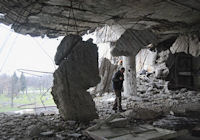

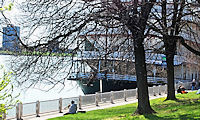
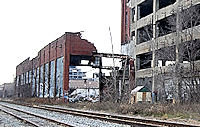
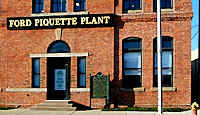

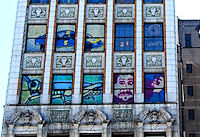
|
Urban Explorers Discover DetroitThe city of Detroit, Michigan has attracted "urban explorers" who come to roam around the abandoned buildings of this industrial city's formerly occupied urban areas. They come out of curiosity, to photograph urban ruins, to be photographed with the ruins, to express themselves on building walls, and to see what most people never see. This book, with over 200 photographs, is about exploring Detroit, its natural assets, its beautiful buildings and its abandoned neighborhoods. The author takes you inside the graffiti-filled walls of abandoned factories and empty homes, with instructions and directions for readers who might want to do some urban exploring or just learn more about this city's past and how it got to be a city with upwards of 80,000 abandoned buildings. THE MOTOR CITY Founded in 1701 by French explorers, Detroit has a history spanning over 300 years, reaching its population peak of nearly two million people in the 1950s. Waves of immigrants from Europe and migrations of people from the South came, seeking work in the industrial factories of northern cities. Known as The Motor City, Detroit, as birthplace of the American auto industry, had plenty of jobs to offer them. The city prospered as it built tall buildings downtown, good schools in thriving neighborhoods and was known for its lovely single-family homes. As the American auto industry began losing out to foreign competition in the 1970s, factories closed or went out of business and Detroit went into decline. URBAN UNREST AND DEPOPULATION By the 1960s the city's majority population was shifting from white to black. Tension increased between African-American residents, who had been "urban-renewed" out of their East Side neighborhoods into an overcrowded West Side area, and the mostly white police department. In 1967, a police raid sparked deadly violence, with 44 people dead in a week of rioting. Detroit's main thoroughfares, which had been lined with retail and commercial businesses, were left in shambles. Fire had consumed many businesses which never returned. Depopulation began with "white flight" and continued through the decades as middle-class blacks also departed for the suburbs. By 2010, the population was a third of what it once was. Tour the Real Motor City Through This Unique eBookThis book is a guide to the real Detroit, with its natural assets like the riverfront and its many beautiful and historic buildings, as well as its abandoned neighborhoods and "fabulous ruins." Theresa's interest in Detroit and its history is personal. Coming to Detroit in 1964 to attend Wayne State University, she met her future husband, David. Married for only a month, Theresa and David were living in the heart of the riot area in 1967 when the riot broke out. They experienced a city in chaos, with fires burning in all directions and National Guard tanks rolling down the street in front of their apartment building. Together, they experienced the decline of the city, living, over the years, in both city and suburbs. Driving Woodward Avenue every day on her last job before retiring in 2009, Theresa began photographing what she saw. Along with David, a professional photographer, she began visiting places she had known in the city and places she discovered during these visits. She and David soon found themselves among the odd fraternity of "urban explorers" fascinated with the widespread abandonment of a formerly great city. The years from 2009 to 2013 were the low point, when houses and commercial buildings, abandoned by their owners, were being trashed and burned and no one was doing anythng about it. BANKRUPTCY: A NEW BEGINNING? Detroit went into such serious decline that Michigan's governor appointed an Emergency Manager to try to establish financial solvency. City services had deteriorated to the point where street lights didn't work, garbage and trash were being dumped in vacant lots and vandals were stripping the pipes and window frames from an increasing number of abandoned buildings. Former mayor Kwame Kilpatrick was convicted of corruption and began serving a 28-year prison sentence as the city's downward slide continued. The state-appointed Emergency Manager filed for bankruptcy for the city of Detroit in 2013, the nation's largest-ever municipal bankruptcy. The same year the city elected a new mayor, Mike Duggan, the first white mayor since 1974, who began working with the state-appointed Emergency Manager to get the city back on track. Governor Snyder announced that Detroit had as many as 80,000 abandoned buildings. For the Motor City, there was really nowhere to go but up. RISING UP Detroit, whose motto is "It shall rise from the ashes," is putting the hard times behind it. Having hit bottom with the bankruptcy in 2013, the upward movement began. This rising up is political, economic and, above all, artistic. The city is full of creative energy, with vacant lots turned into gardens and outdoor art galleries. Detroit is filled with colorful, original street art providing a hopeful sign that the city that once rose from the ashes of a devastating fire in 1805 can come back once again. Construction is happening all over town and nowhere more so than downtown where cranes and heavy equipment seem to be everywhere. A street car line is being built up Woodward Avenue and will soon have riders. Even in the neighborhoods, derelict houses are coming down, street lights are working again, and some old buildings are getting new enthusiastic residents who are creating totally new neighborhoods. DETROIT STORIES, DETROIT PHOTOS Theresa Welsh, a professional writer, author and photographer, shares her observations, stories and photos of her adventures as an urban explorer in a city she and David have known well over 45 years since they both arrived as young college students. You will learn about Detroit's past and present, with plenty of facts and stories about neighborhoods, buildings and the changes in the landscape of the city over time. The narrative, which takes you from the Woodward corridor, to the East Side and the West Side, is liberally illustrated with photos (over 200 photos taken by Theresa and David Welsh). DETROIT TOURS The book is divided into driving "tours" you can take to see the real Detroit. Follow your interests, whether it's historic buildings, beautiful architecture, amazing street art, or exploring urban ruins. You'll get solid information on where to go and how to get there. You can also follow the tours on an online map or just read and look at the photos to learn more about one of America's great cities: Detroit, Michigan.
|